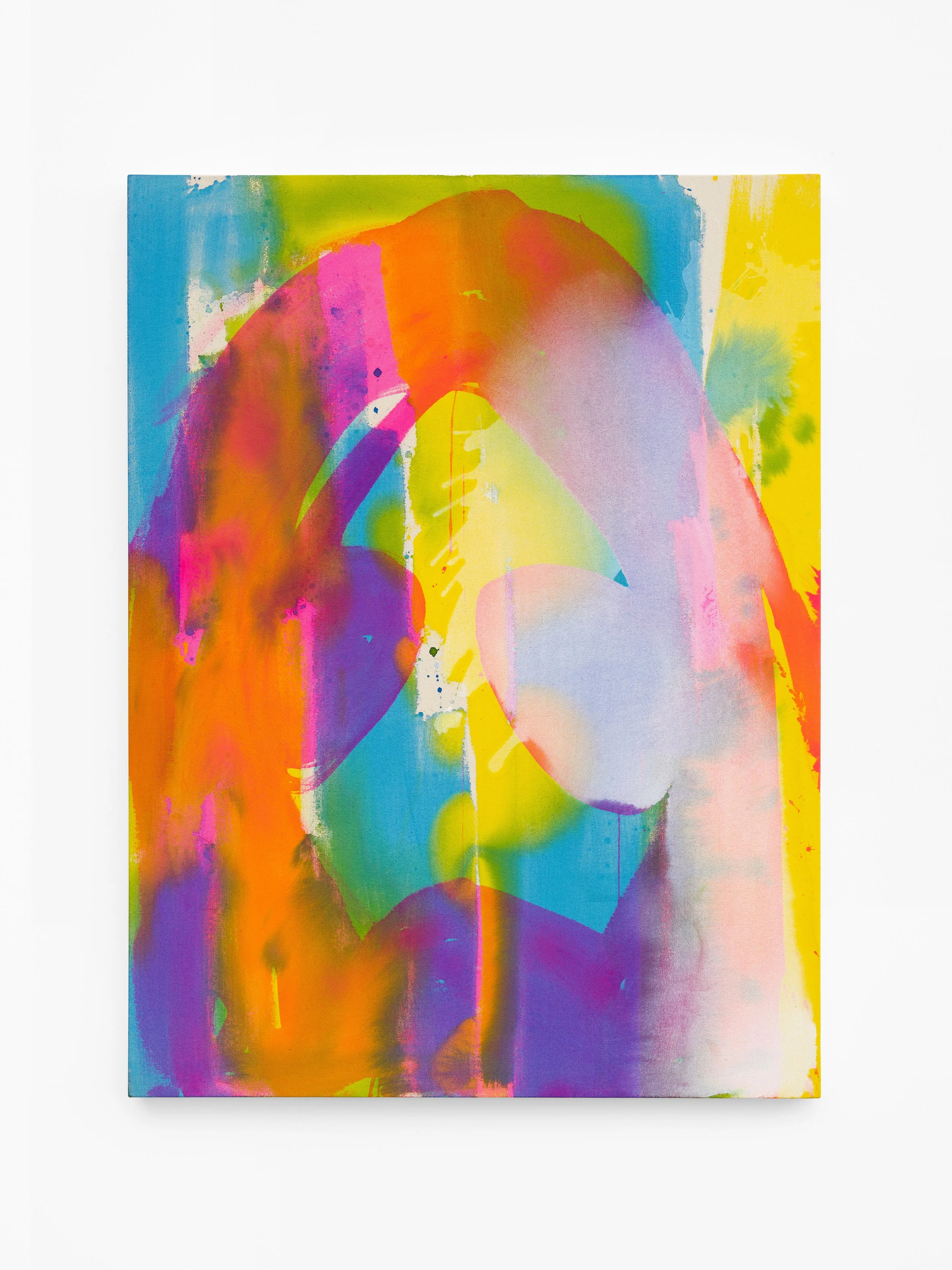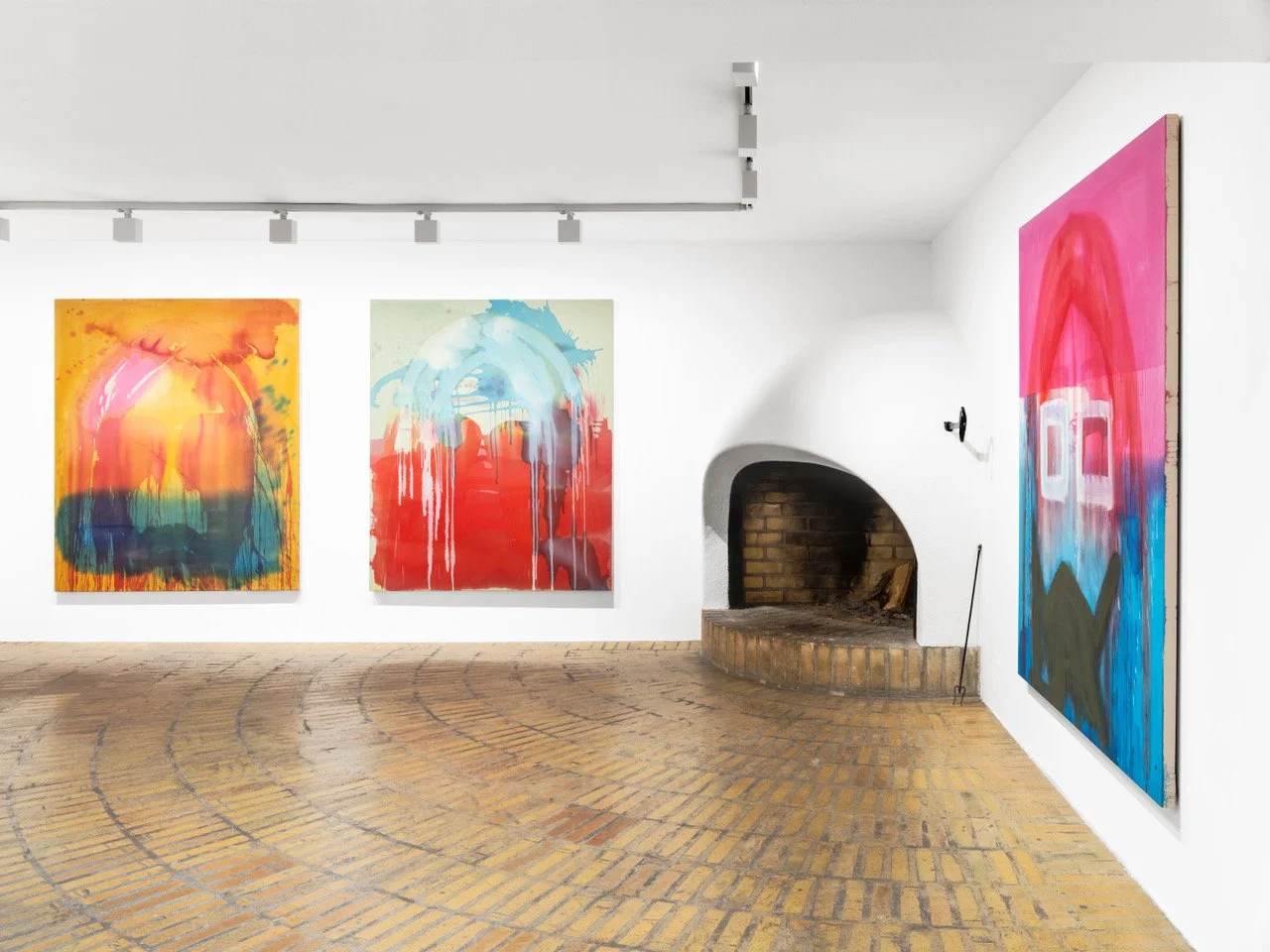
Liz Markus
A conversation with the artist on the occasion of This Might Go On Forever, her new exhibition at Loyal Gallery in Stockholm.
Liz Markus has mounted solo exhibitions internationally at The Pit (Los Angeles), Maruani Mercier (Brussels), Unit (London), Nathalie Karg (New York), White Columns (New York), and Loyal Gallery (Stockholm). Group museum exhibitions include “A New Subjectivity” curated by Jason Stopa with Katherine Bernhardt, Kathy Bradford, Rose Wiley, and Jackie Gendel at Pratt Manhattan Gallery in New York, Fine Arts Center Gallery at the University of Arkansas, and The Reece Museum at East Tennessee State University, and “Domestic Seen,” a group exhibition curated by Bruce Hartman at the Nerman Museum of Contemporary Art in Kansas City.
Interview by Dan Golden
Congratulations on your new exhibition at Loyal. The work looks fantastic. I’d love to start our conversation by getting your take on the exhibition's title; This Might Go On Forever.
The line is from a poem by beat poet Michael McClure entitled “Mexico Seen from the Moving Car.” He’s talking about the desert. It resonated with me because today’s nightmare of global warming and the worldwide political shift towards the right feel like they might go on forever but also because this body of work is a continuation of work that I started in 2005 and started back last year. And so I believe it will go on forever (at least for my lifetime).
I’ve been following your work for some time, and this latest work feels like a step into something new, exciting, and elevated.
I agree. Elevated is the sense I have too. They are the apotheosis of my striving to have a dialogue with the artists I grew up with in the Albright-Knox collection in Buffalo, where they have one of the best collections of AbEx, Color Field, and Pop Art. They are pure paintings but the hippies with aviators that lurk underneath save them from being heavy.
Why Do You Ask?, 2022, acrylic on canvas, 72 x 60 inches
Seemingly Nowhere, 2022, acrylic on canvas, 72 x 60 inches
How did you land on the hippy figure for this new work?
I developed my hippie figure with long hair and aviators in 2005 during the second election campaign of George W. Bush. I was living in NYC and working full-time as a multimedia designer. I felt like I was “working for the man.” Every morning I would get up an hour early to draw and paint while listening to Air America Radio, and they were as angry as I was at Bush. Yearning for a freer life and detesting the conservative politicians in office, I began to identify with the counterculture of the 60s and 70s. It felt natural when my hippie guy with aviators popped up in my drawing. I was immediately obsessed with him and with hippie culture and began developing work around him.
Ascension, 2021, acrylic on canvas, 72 x 60 inches
The Singularity, 2021, acrylic on canvas, 60 x 48 inches
Salt, 2022, acrylic on canvas, 60 x 48 inches
Subterranean, 2022, acrylic on canvas, 60 x 48 inches
Color field painting and minimalism appear on the surface to be touchpoints for you, but I feel you have been able to develop a visual language and voice all your own. That said, who are some of the artists who inspired you coming up?
I grew up frequently visiting the Albright-Knox Gallery in Buffalo. I came to know and admire De Kooning, Rauschenberg, Rothko, Pollock, Rothenberg, and Noland there. But also the Pop and Minimalist artists like Warhol, Marisol, Segal, Judd, Andre, Kelly, and Flavin, among others. I was always taught that you must find your own voice as an artist and that to have anything to say, you had to have lived some life. So I never aimed to have an active career in my 20s. I spent quite of bit of time in my 20s dealing with depression and addiction, so I had my hands full. But I was also developing as an artist. I went to grad school (to Tyler in Philadelphia) when I was 27 and had Stanley Whitney and Dona Nelson as my professors. And they taught me a lot about painting. Not what to paint but how a painter is. Stanley would talk about confidence. And Dona taught me how to get to a place in a painting where it could stand on its own and be good.
What are some of your other inspirations and references?
I’m drawn to 60’s Laurel Canyon music like Crosby, Stills, and Nash. Grunge and 90’s rock like Nirvana and Green Day. And the Beastie Boys somehow feel like family, though I don’t know them. I also got heavily into Kanye’s Life of Pablo.
In Watermelon Sugar by Richard Brautigan is one of my favorite books. I first found it in a used bookshop in San Francisco because I loved the cover. I love Joan Didion and strangely have ended up living next door to her famous house on Franklin Avenue in Hollywood. My terrace overlooks what was once her tennis courts but is now a huge vegetable garden belonging to the Japanese spiritual society that now owns her house and believes in healing through natural agriculture.
Acid Prism, 2022, acrylic on canvas, 48 x 36 inches
Bubble Yum, 2022, acrylic on canvas, 72 x 60 inches
Pop Rocks, 2022, acrylic on canvas, 72 x 60 inches
Pale Rider, 2022, acrylic on canvas, 60 x 48 inches
What is a typical day like for you in your studio?
I usually arrive around noon and make coffee. Then I procrastinate online for a while before straightening up the studio and filling up buckets of water in preparation for painting. Because I stain unprimed canvas I have to paint fast and I can’t go back and fix anything. It either works, or it doesn’t. That procrastination time is really me gearing up for this high-wire act. Once I’m painting I’m completely focused and in dialogue with the work. I mean that literally. I make a move on the canvas, and then I wait until the painting gives me a definite order like “paint that area red.” I often balk and say, “Really? Red? I don’t think so. That’s crazy.” But I’ve learned to trust that voice. It’s always a better painting when I do. If I leave the studio very uncomfortable with what I’ve done, it usually means I’m on the right track.
Liz Markus, This Might Go On Forever (installation view), 2022, Loyal Gallery, Stockholm
Liz Markus, This Might Go On Forever (installation view), 2022, Loyal Gallery, Stockholm
Liz Markus, This Might Go On Forever (installation view), 2022, Loyal Gallery, Stockholm
If you weren’t a painter, what would you do?
I’d be an actor. I’ve always been drawn to that art form. Performance is part of the way that I paint, though it’s in private. I used to say I’d be a veterinarian because that’s what I wanted to do before I knew I was an artist at age 15. As I love animals more than anything, it’d still be a good choice.
What’s next?
I have solos coming up at The Pit in LA, Shrine in New York, and Unit in London.
Liz Markus
This Might Go On Forever
Loyal Gallery, Stockholm
August 18 — September 17, 2022












